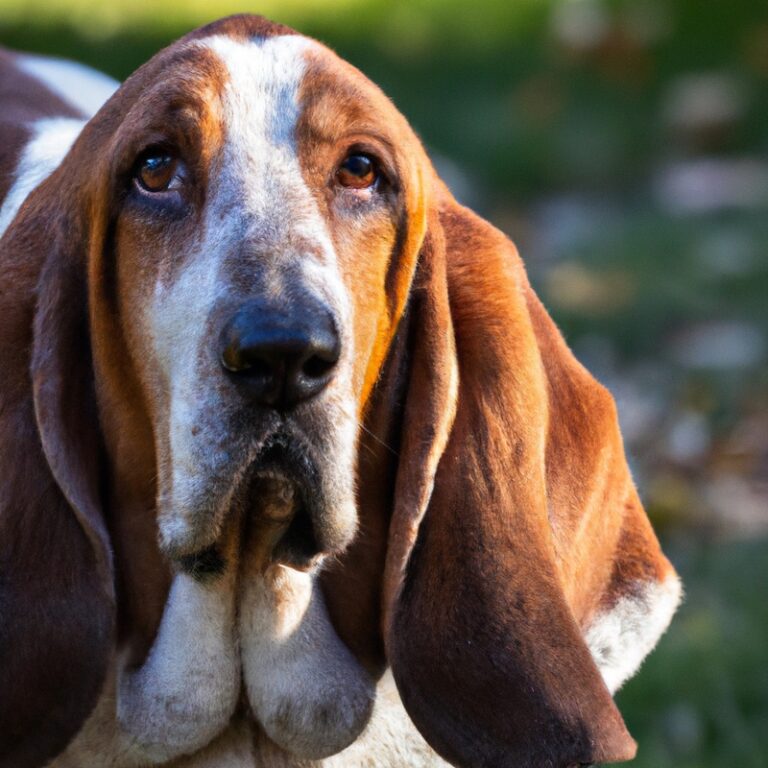Can Basset Hounds Be Left Alone In a Crate?
Key Takeaways:
- Basset Hounds can be left alone in a crate for short periods of time.
- However, they may experience separation anxiety if left alone for extended periods.
- Crate training is essential for a Basset Hound’s comfort and security.
- Regular exercise and mental stimulation are crucial to prevent behavioral issues when crated.
Imagine coming home to find your living room turned into a disaster zone: furniture ripped apart, shoes chewed to bits, and the unmistakable scent of mischief lingering in the air.
If you’re a Basset Hound owner, this scenario might sound all too familiar.
These lovable and mischievous pups have a knack for getting into trouble when left unsupervised.
But fear not! In this article, I’ll be sharing my expertise on whether or not Basset Hounds can be safely left alone in a crate.
We’ll delve into their behavior, the benefits and steps of crate training, and explore alternative options to keep your furry friend entertained and out of trouble.
So, let’s dive in and find out the best way to keep your Basset Hound happy and your home intact!
| Can Basset Hounds be left alone in a crate? | Yes |
Understanding Basset Hound Behavior
Temperament of Basset Hounds
Basset Hounds have a friendly and laid-back temperament.
They are known for being gentle, patient, and good-natured.
These dogs are generally quite calm and enjoy spending time with their human companions.
Bassets are also known to be stubborn at times, but with patient and consistent training, they can be well-behaved and obedient pets.
They have a strong sense of smell and may follow scents, so it’s important to keep them on a leash during walks.
Basset Hounds are generally good with children and other pets, making them a great choice for families.
Separation Anxiety in Basset Hounds
Separation Anxiety in Basset Hounds can be a common issue. These dogs form strong bonds with their owners and can become anxious when left alone.
Some signs of separation anxiety in Basset Hounds include excessive barking, destructive behavior, and house soiling.
To help alleviate separation anxiety, it’s important to gradually introduce solitude, provide mental stimulation with toys, and create a safe and comfortable environment. Consistency and positive reinforcement are key in helping Basset Hounds overcome separation anxiety.
Remember to consult with a professional trainer or veterinarian for personalized advice.
Crate Training for Basset Hounds
Benefits of Crate Training for Basset Hounds
Crate training can have several benefits for Basset Hounds.
- A crate provides a safe and secure space for your dog when you can’t supervise them.
- It helps with house training by teaching them to hold their bladder and bowels until you let them out.
- Crate training can prevent destructive behavior by giving your Basset Hound a designated area for alone time.
- It can also reduce separation anxiety by providing a den-like environment where they feel safe and comfortable.
- Lastly, crate training can make traveling and vet visits easier, as your Basset Hound will be accustomed to being in a crate.
Steps to Crate Train a Basset Hound
To crate train a Basset Hound, start by introducing the crate as a positive space. Place treats and toys inside to make it more appealing.
Next, encourage your Basset Hound to explore the crate by leaving the door open.
Once they are comfortable entering and exiting, begin closing the door for short periods, gradually increasing the duration. Always reward your Basset Hound with treats and praise when they remain calm in the crate.
Consistency and patience are key to successful crate training.
Leaving Basset Hounds Alone in a Crate
Appropriate Crate Time for Basset Hounds
Basset Hounds can typically handle being left alone in a crate for around four to six hours.
It’s important to consider their age, as younger puppies may need more frequent bathroom breaks.
Gradually increasing crate time and providing mental stimulation can help minimize any discomfort or anxiety.
Making sure the crate is comfortable and secure can also make a difference in their experience.
It’s crucial to observe your Basset Hound’s behavior and adjust crate time accordingly.
Preparing the Crate for Basset Hound Solo Time
When preparing the crate for your Basset Hound’s solo time, it’s important to create a comfortable and safe environment. Line the crate with soft bedding or blankets to provide a cozy space for your dog.
Make sure the crate is large enough for your Basset Hound to stand up, turn around, and lay down comfortably.
Place some of their favorite toys or a chew bone inside the crate to keep them entertained. Additionally, provide fresh water and make sure the crate is in a quiet area to minimize distractions.
Tips for Comforting Basset Hounds in the Crate
To comfort your Basset Hound in the crate, there are several things you can do:
- Create a cozy environment: Line the crate with soft bedding and add familiar scents, like a blanket with your scent or a toy they love.
- Provide a soothing soundtrack: Play soft music or use a white noise machine to drown out any external noises that might cause stress.
- Offer distractions: Provide interactive toys or puzzle feeders to keep your Basset Hound mentally stimulated while in the crate.
- Use positive reinforcement: Reward your Basset Hound with treats or praise when they enter the crate willingly or show calm behavior.
- Establish a routine: Stick to a consistent schedule for crate time and make sure to gradually increase the duration to help your Basset Hound feel more secure.
Remember, each Basset Hound is unique, so experiment with different techniques to find what works best for your furry friend.
Managing Basset Hound Anxiety
Managing Basset Hound anxiety involves providing a calm and secure environment. Here are some tips:
- Establish a routine: Basset Hounds thrive on consistency, so sticking to a daily routine can help alleviate anxiety.
- Provide mental stimulation: Keeping their minds engaged with interactive toys and puzzle games can help distract them from anxious thoughts.
- Exercise regularly: Basset Hounds are active dogs, and regular exercise can help reduce anxiety by releasing pent-up energy.
- Create a safe space: Designate a quiet area in your home where your Basset Hound can retreat to when they’re feeling anxious.
- Use calming techniques: Some Basset Hounds respond well to techniques like aromatherapy, gentle music, or pressure wraps to help soothe their anxiety.
- Consider anxiety supplements: Natural supplements, such as chamomile or valerian root, can help promote relaxation in your Basset Hound.
- Seek professional help if needed: If your Basset Hound’s anxiety persists or worsens, consulting with a veterinarian or professional dog trainer can provide additional guidance and support.
Gradually Increasing Crate Time for Basset Hounds
To gradually increase crate time for your Basset Hound, start by introducing short periods in the crate when you are home. Make sure the crate is a positive space with cozy bedding and toys.
Leave the crate door open and let your dog explore at their own pace.
Gradually extend the time in the crate, always rewarding good behavior with praise or treats. Remember, consistency is key, and patience is important when crate training your Basset Hound.
Alternatives to Crating Basset Hounds
Dog-proofing the House
To dog-proof your house for your Basset Hound, there are a few things you can do.
First, make sure any hazardous items are out of their reach, such as cleaning supplies and electrical cords.
You should also secure any loose objects that they could chew on, like shoes or pillows.
Consider setting up baby gates to restrict access to certain areas.
Finally, provide them with plenty of toys and interactive games to keep them entertained and prevent them from getting into mischief.
Using a Playpen for Basset Hounds
A playpen can be a great alternative to crating your Basset Hound when you need to leave them alone. It provides a larger space for them to move around and play while still keeping them contained.
Make sure the playpen is sturdy and secure so your Basset Hound can’t escape.
Include their bed, toys, and water bowl in the playpen to keep them comfortable. You can also use pee pads or a designated potty area to manage their bathroom needs.
Gradually increase the time they spend in the playpen to help them adjust.
Monitoring their behavior is important to ensure they are safe and content.
Enlisting Help from a Dog Sitter or Dog Walker
If you can’t crate your Basset Hound, enlisting help from a dog sitter or dog walker can be a great alternative.
Hiring a dog sitter allows your dog to stay in their familiar home environment while receiving personalized attention and care.
A dog walker can come by during the day to take your pup for a walk and provide some companionship.
Just make sure to thoroughly vet any potential sitters or walkers to ensure they are experienced and trustworthy.
Communication and clear instructions are key to ensure the well-being of your Basset Hound while you’re away.
Doggie Daycare for Basset Hounds
Doggie daycare can be a great alternative to crating your Basset Hound.
It provides them with socialization, exercise, and mental stimulation while you’re away.
In daycare, your Basset Hound will have the opportunity to interact with other dogs and trained staff members who can supervise and engage them in activities.
This can help prevent boredom and separation anxiety.
Plus, daycare allows your Basset Hound to burn off energy and come home tired and content.
Just make sure to choose a reputable daycare facility that is experienced in handling Basset Hounds and provides a safe and stimulating environment.
Final Verdict
Crate training can be a valuable tool for managing a Basset Hound’s behavior and providing them with a safe and comfortable space when left alone. However, it is important to understand their temperament and address any separation anxiety they may have.
Gradually increasing crate time, dog-proofing the house, using a playpen, enlisting help from a dog sitter or walker, and considering doggie daycare are all alternatives to crating.
Ultimately, it is crucial to find the right balance between providing structure and ensuring your Basset Hound’s well-being when left alone.







